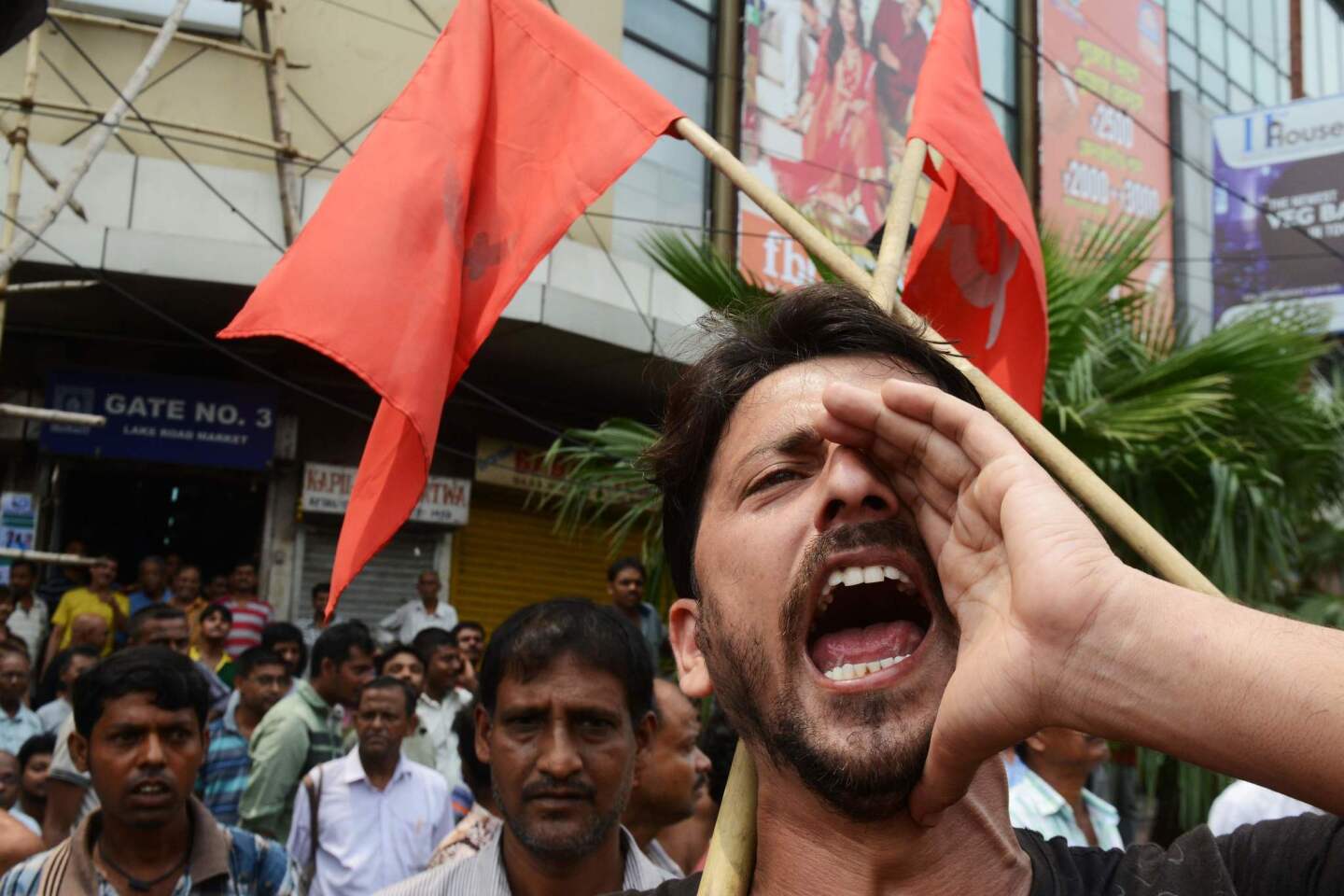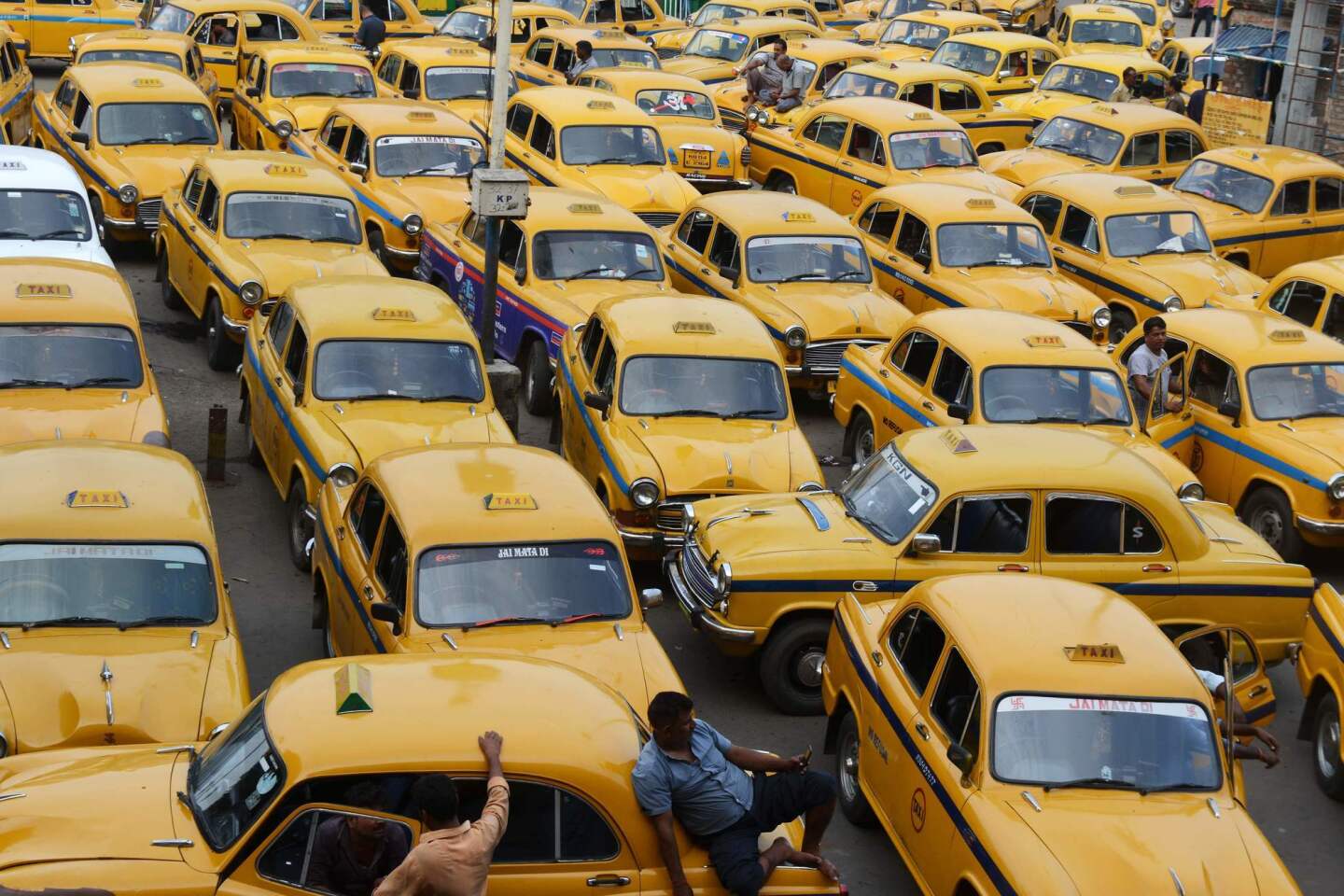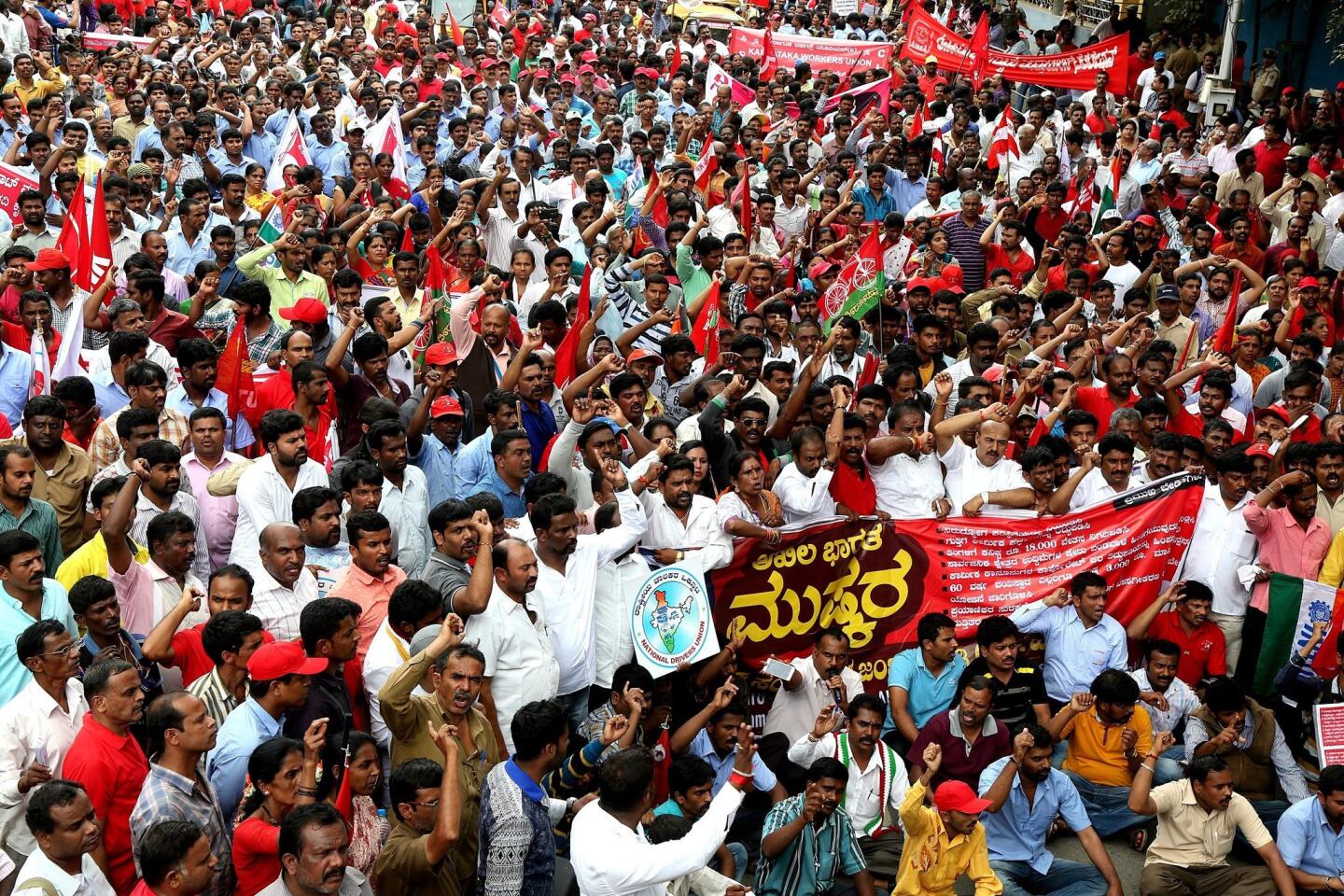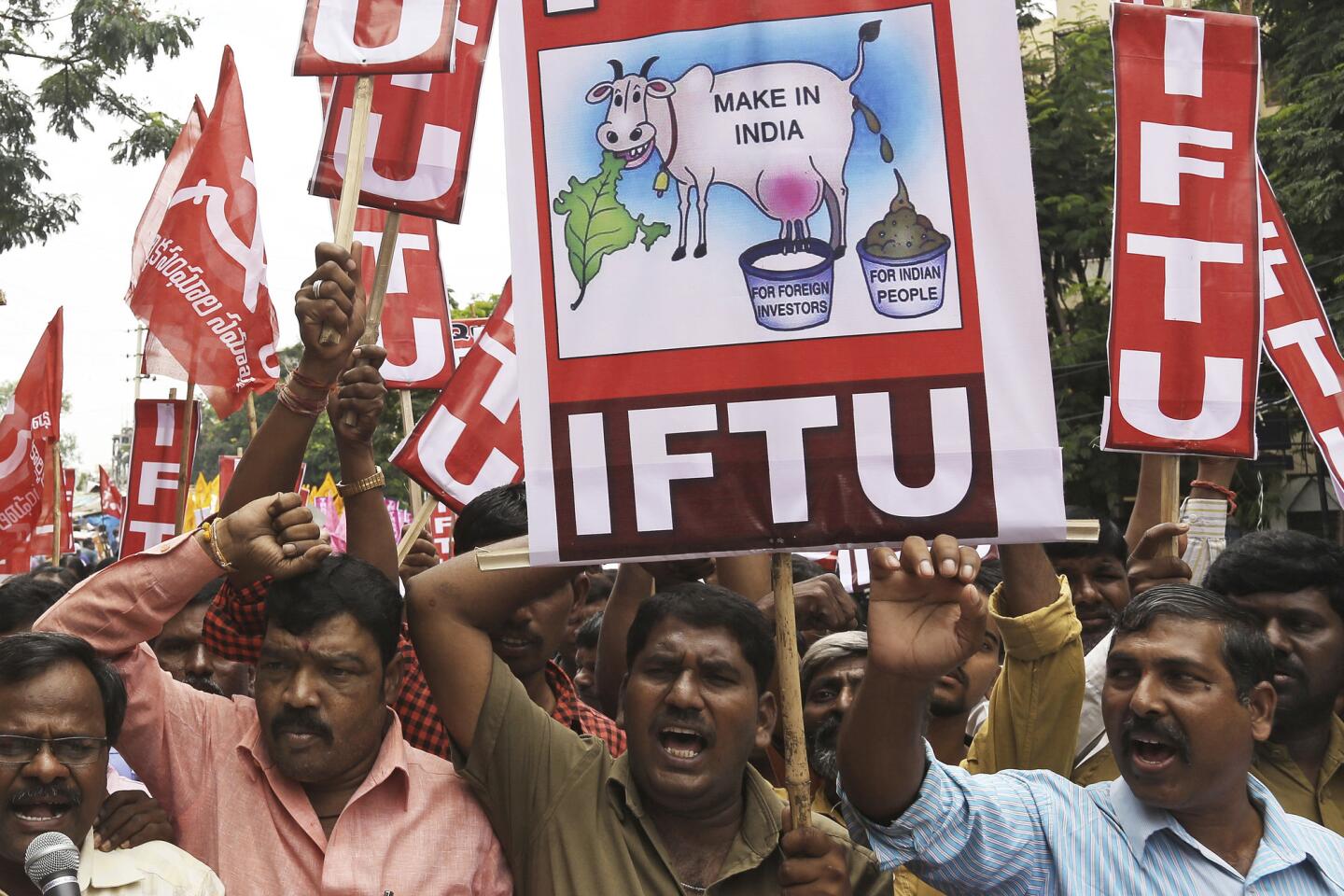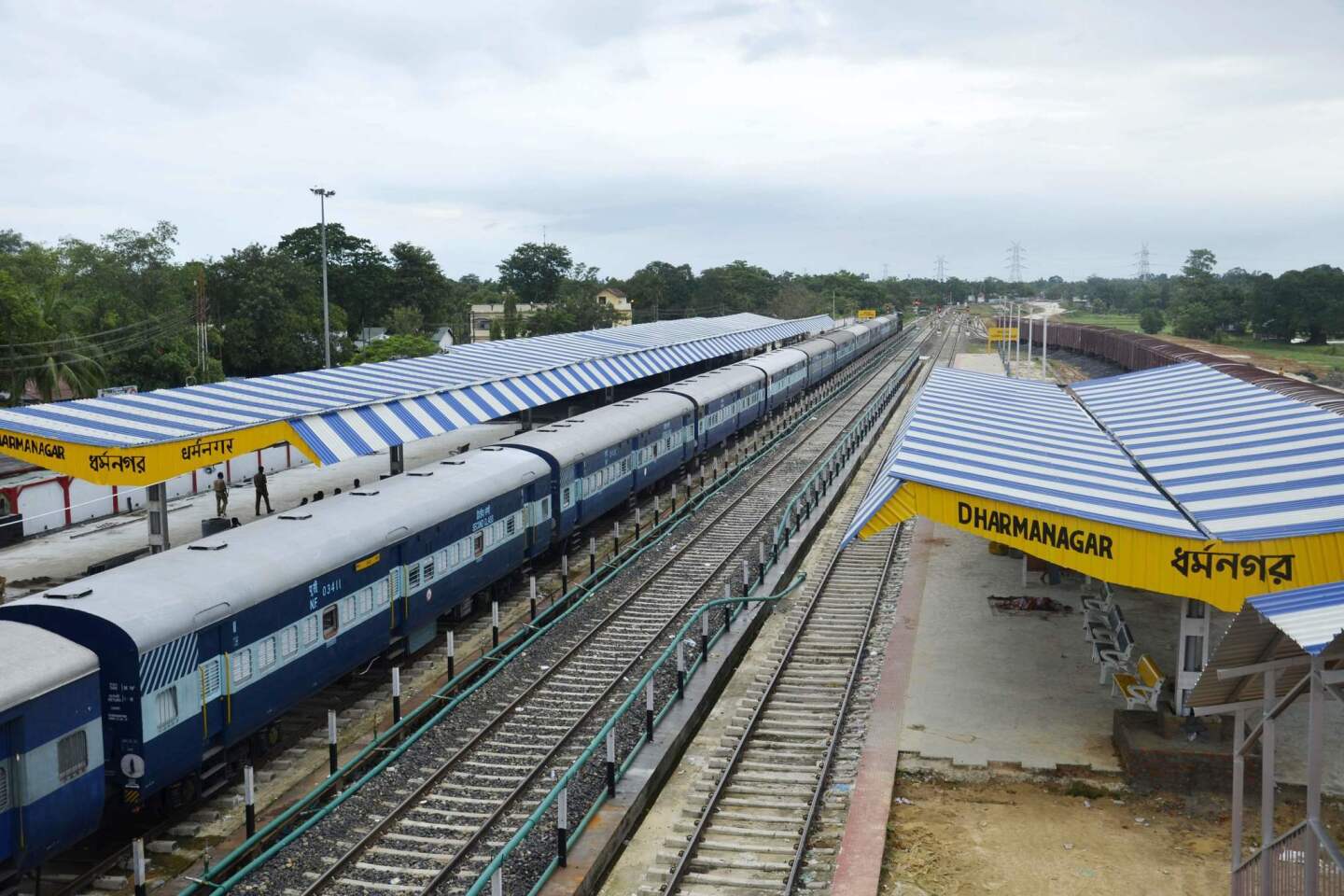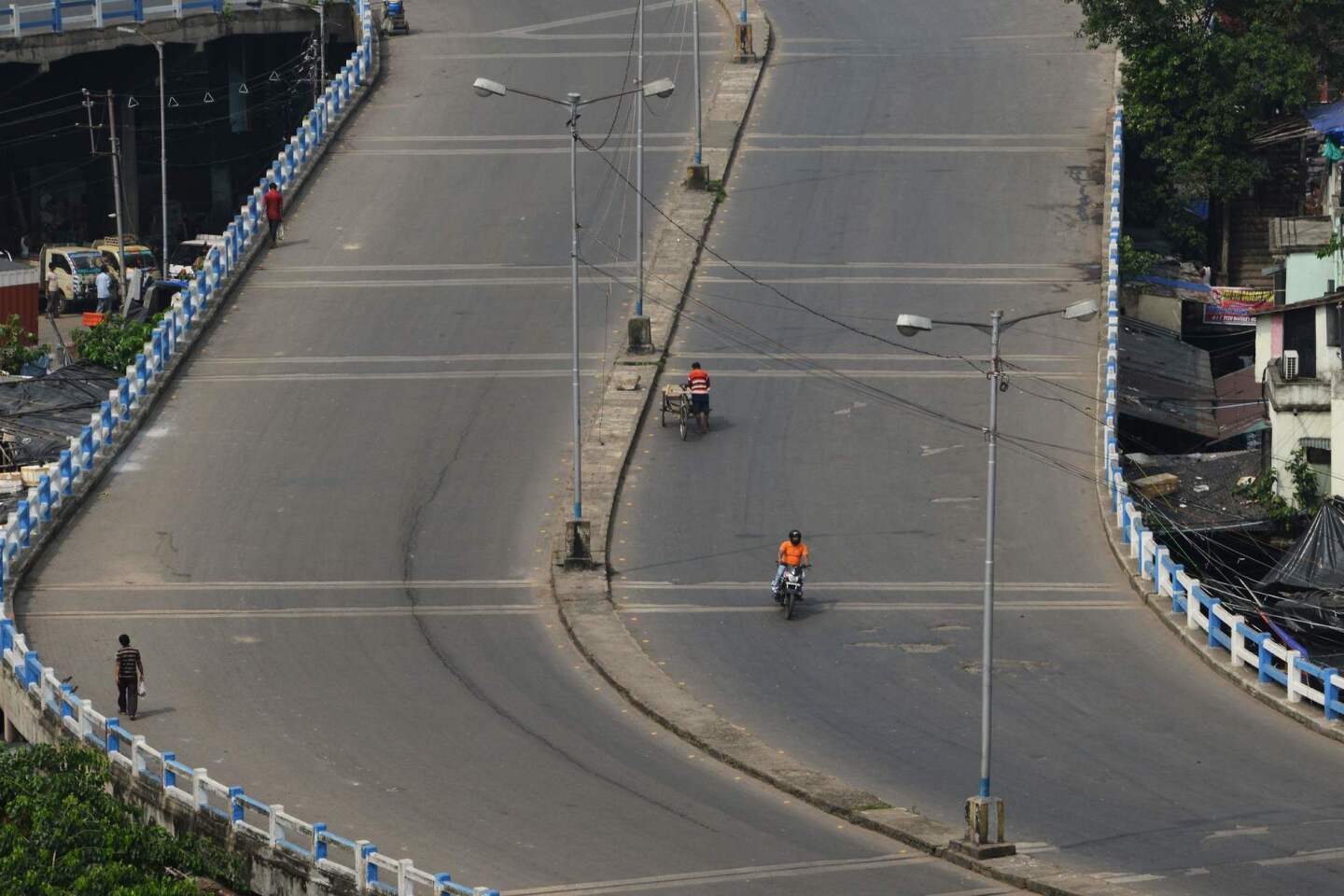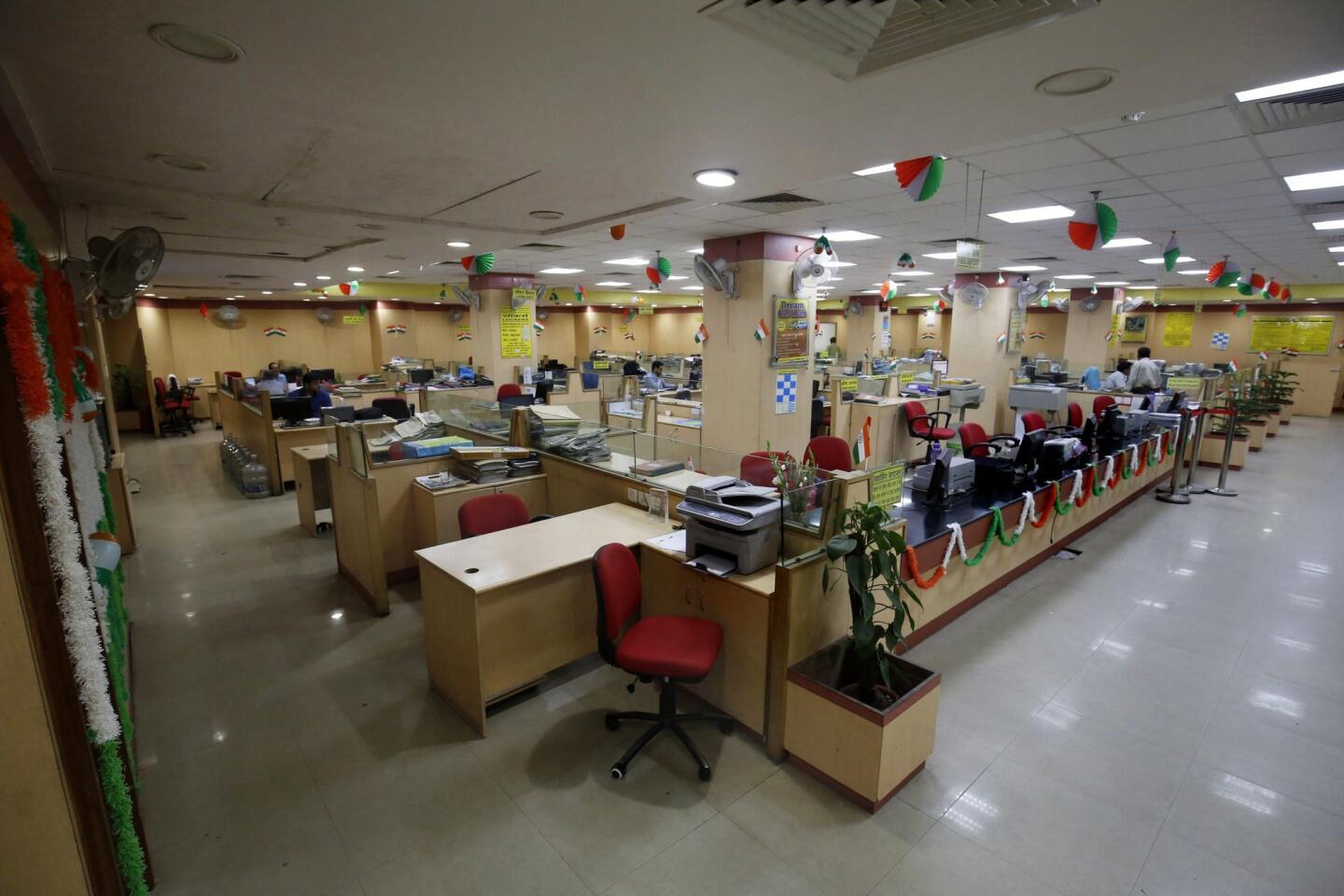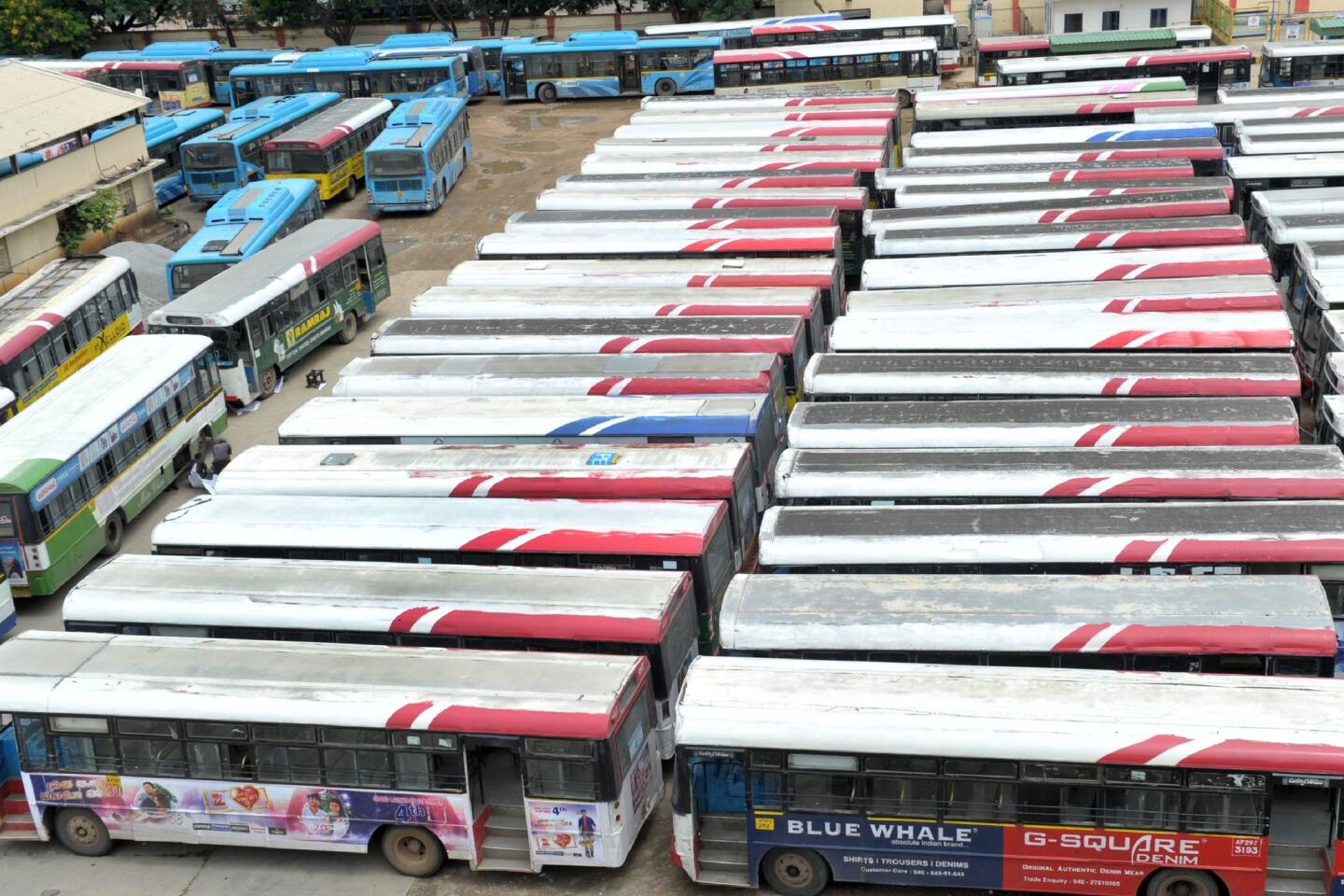Why millions of Indian workers just staged one of the biggest labor strikes in history
- Share via
Reporting from MUMBAI, India — Earlier this month, tens of millions of Indian workers staged a one-day general strike that unions billed as the biggest work stoppage in human history.
By the unions’ count, 180 million workers stayed home to demand a slew of changes to labor laws, including establishing a $270 monthly minimum wage for unskilled laborers and ensuring social security for every worker.
The 24-hour strike cost the Indian economy up to $2.7 billion, by one estimate, and affected electricity, mining, telecommunications, banking and insurance operations in several states.
It was the latest salvo in an escalating battle between India’s leading public-sector trade unions and Prime Minister Narendra Modi’s government, which they accuse of pursuing a pro-business agenda while ignoring workers’ rights.
You had millions of workers on strike.... To portray their demands as somehow greedy strikes me as an extraordinarily immoral attitude.
— Vijay Prashad, history professor at Trinity College
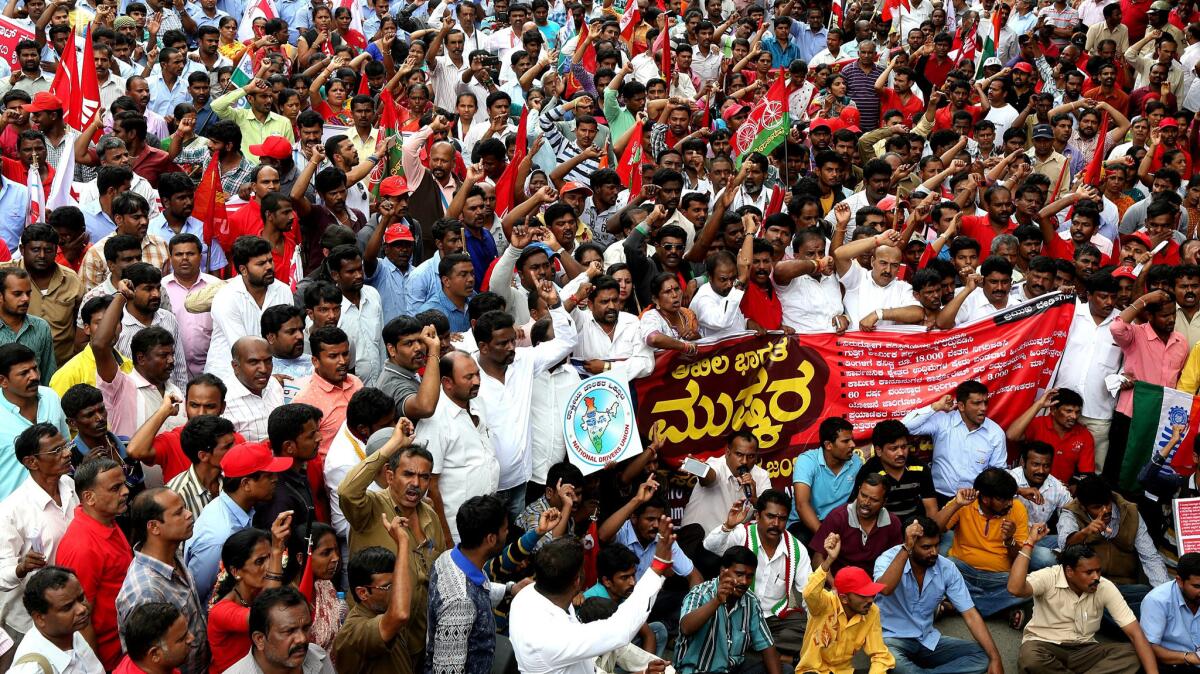
The unions represent several million workers in a country of 1.3 billion people. But the changes they are seeking would have the greatest effect on those who toil in India’s vast informal economy, which by some measures includes 90% of the workforce.
These housekeepers, deliverymen, sidewalk vendors, pushcart drivers, bricklayers and others account for roughly half of what has become the world’s fastest-growing major economy. Yet they lack health benefits, pensions and basic labor protections, including the ability to organize.
And because there is no enforcement of minimum wage laws at the informal level, these workers struggle the most when prices rise. In Mumbai, India’s financial hub, domestic servants sometimes leave jobs for raises of as little as $15 a month.
Although these workers aren’t represented by any union, their struggles have been adopted by public-sector unions seeking to expand their political base and raise pressure on the government. Many informal workers joined the Sept. 2 strike, which labor experts say showed growing frustration among the masses.
“The strike is significant in that it clearly articulated the unfulfilled grievances and the demands of the working class, which have not been given any kind of a patient and concerted hearing by the government,” said K.R. Shyam Sundar, a professor of human resources management at the Xavier School of Management in Jamshedpur, India.

The battle over labor laws is shaping up as a crucial test of Modi’s efforts to turn the nation into an economic juggernaut.
Despite impressive growth statistics, India has struggled to create jobs for the estimated 600,000 people who enter the workforce every month.
To boost manufacturing and attract foreign companies, Modi, who took office in 2014, has promised to streamline a burdensome regulatory framework and give employers more flexibility. Under the slogan of “Make in India,” the government has proposed laws that would make it easier for companies to lay off employees, avoid paying severance and extend working hours.
Read more: What it’s like to live in the world’s fastest growing major economy »
The government argues that by lifting some restrictions on companies, it will spur job growth and ultimately bring more workers into the formal sector.
Yet labor advocates say workers need more protections, not fewer. Even government officials acknowledge that India’s existing regulations — a tangle of dozens of laws, some dating to independence in 1947 — are routinely flouted.
“Despite a reputation of having strong labor protections, India lags significantly behind similarly positioned nations economically in terms of enforcement,” said Antara Haldar, a professor at the University of Cambridge.
“I am optimistic about the strike bringing the labor issue into the foreground in a way we haven’t seen since this government came to power.”
In an attempt to avert the strike, India’s finance minister offered to raise the minimum wage for unskilled government workers to $180 a month. But that fell far short of what the unions were seeking in a 12-point charter of demands they issued last year, and it was lower than what the state government in New Delhi, the capital, sets for unskilled workers.
Critics called the government’s offer insensitive.
“You had millions of workers on strike, and many of the millions are living in conditions of deprivation,” said Vijay Prashad, a professor of South Asian history at Trinity College in Hartford, Conn.
“To portray their demands as somehow greedy strikes me as an extraordinarily immoral attitude. If you don’t accept the 12-point demands, what is your approach? The government hasn’t articulated that at all.”
Though the strike was called historic, it disappeared from the headlines just as quickly as the 16 previous general strikes held in India since 1991. Indian news networks, many of which are backed by powerful corporations, gave it scant coverage. Services in the biggest cities, Mumbai and New Delhi, were barely affected.
Vishwas Utagi, vice president of the All India Bank Employees Assn., a trade union that participated in the strike, said he longed for a leader like Sen. Bernie Sanders, who brought income inequality and workers’ rights into the national conversation in the United States in his campaign for the Democratic presidential nomination.
“Here in India only the trade unions are talking about these issues,” Utagi said.
Prashad, the professor, said the size of the strike argued otherwise.
“India doesn’t need a Bernie Sanders,” Prashad said. “It just had 180 million of them on the street.”
Follow @SBengali on Twitter for more news from South Asia
ALSO:
India swiftly rejects U.N. request for a visit to the disputed territory of Kashmir
Nearly 50 million children uprooted: A global crisis by the numbers
Dogs, Deepak Chopra, Instagram weddings and other signs of change among Iran’s middle class
More to Read
Sign up for Essential California
The most important California stories and recommendations in your inbox every morning.
You may occasionally receive promotional content from the Los Angeles Times.
